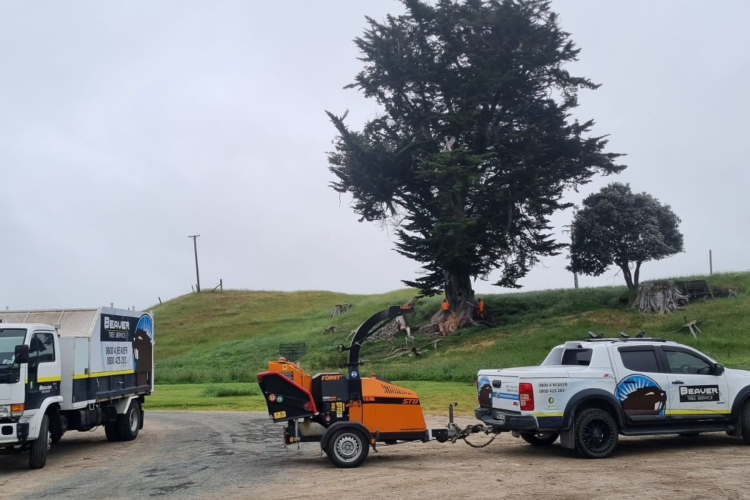Winter Frosts

Winter frosts are a natural part of many New Zealand landscapes, especially in inland and southern regions. While frost plays an important role in many ecosystems, it can also be challenging for our garden trees and plants. At Beaver Tree Service, we often get asked how frost affects trees and what homeowners can do to protect them during the colder months.
Understanding the impact of frost on trees helps you keep your garden healthy and thriving through winter and beyond.
What Is Frost and How Does It Affect Trees?
Frost occurs when temperatures drop below freezing, causing moisture in the air or on surfaces to freeze. In New Zealand, frost is most common during clear, calm nights in winter—typically between June and August. Frost-prone areas include the central North Island (like Taupō), parts of Canterbury, Otago, and Southland.
When frost settles on tree leaves, buds, or young shoots, it can cause the water inside those cells to freeze. This can damage or kill delicate tissues, leading to blackened, wilted, or shriveled leaves and buds once temperatures warm again.
Which Trees Are Most Vulnerable?
Some tree species tolerate frost better than others. According to the New Zealand Arboricultural Association (NZ Arb), frost-sensitive species include:
- Citrus trees and other subtropical varieties
- Recently planted or young trees
- Trees with thin bark or delicate leaves, such as maples and poplars
- Fruit trees in early stages of leafing or flowering
Conversely, many native New Zealand trees such as pōhutukawa, kānuka, and mānuka have adapted well to local frost conditions and can generally withstand light frost without damage.
Signs of Frost Damage
After a frost event, keep an eye out for:
- Blackened or water-soaked leaf edges
- Wilting or curled leaves
- Damaged buds that fail to open in spring
- Cracking bark in severe cases
Damage can vary depending on the severity and duration of the frost, as well as how exposed the tree is to cold winds.
How to Protect Your Trees From Frost
While you can’t control the weather, there are steps you can take to reduce frost damage:
- Choose frost-hardy species: Consult local guides or your arborist about the best trees for your area.
- Plant trees in sheltered locations: Position them away from cold winds, such as near buildings or fences.
- Mulch around tree bases: Mulch helps insulate roots and retain soil warmth.
- Water well before frost: Moist soil holds heat better than dry soil, helping protect roots.
- Use frost cloths or covers: For young or delicate trees, especially citrus, covering them overnight during frost warnings can reduce damage.
When to Call an Arborist
If frost has damaged your trees, don’t panic. Some trees recover well once the warmer weather returns, but severe damage can leave trees vulnerable to disease or pests.
A qualified arborist from Beaver Tree Service can assess frost damage and advise on pruning dead material, protecting trees from further stress, or replacing severely affected trees.
In Summary
Winter frosts are a natural challenge in many parts of New Zealand but with the right care, your trees can survive and thrive year after year. Regular monitoring, good planting practices, and frost protection measures can make a big difference.
If you’re unsure about the health of your trees this winter or want expert advice on frost protection, reach out to Beaver Tree Service. We’re here to help keep your trees safe and strong, no matter the season.
